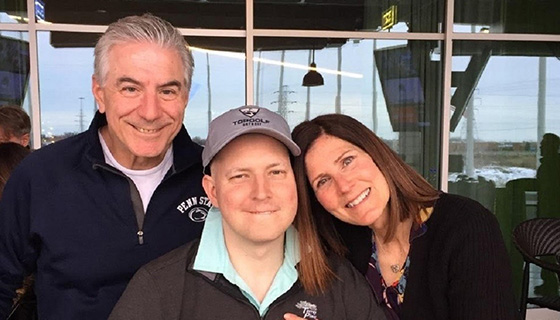How to Perform a Testicular Self-Exam: Advice from Urologist Nirmish Singla
Featured Expert:
Testicular cancer is one of the most common cancers among young men, yet many are unfamiliar with the disease and how easily they can play a role in detecting it. To help, testicular cancer expert Nirmish Singla from the Brady Urological Institute explains how — and why — you should perform regular self-checks.
Why should I check my testicles for cancer?
Some experts doubt the usefulness of testicular self-exams, but these checkups can help men catch testicular cancer early. Although survival rates for all stages of the disease are relatively high, patients diagnosed later often require chemotherapy, which can have unpleasant side effects and toxicities. You should perform self-exams to spot cancer so it can be removed with surgery alone.
How do I perform a testicular self-exam?
Before you start, get to know your anatomy. Here are two things to keep in mind:
- Don’t worry if one testicle is bigger than the other or hangs lower. That’s normal.
- It’s easy to mistake the epididymis for an unusual mass. The epididymis is a coiled set of tubes that lines the back and top of each testicle. It’s the portion of the reproductive system where the sperm “mature” or learn to swim. It will feel softer and bumpier than the testicle it’s attached to.
Here’s how to perform a self-exam:
- Set aside five minutes while you’re in the shower. A warm shower will relax the scrotum and the muscles holding the testicles, making an exam easier.
- Starting with one side, gently roll the scrotum with your fingers to feel the surface of the testicle.
- Check for any lumps, bumps or unusual features. Contrary to what many assume, cancerous tumors typically aren’t painful.
- Make note of any changes in size over time. While the most common symptom of testicular cancer is a painless mass, some men experience swelling of the testicles and scrotum.
- Be aware of any dull soreness or heaviness.
- Switch sides and check the other testicle.
What should I do if I find something?
See your doctor as soon as you can. On average, men wait between four and six months to make an appointment, which could allow the cancer to spread. No guy is particularly thrilled about discussing his testicles, but there’s no reason to feel embarrassed. Your doctor has seen plenty before, and the conversation could save your life.
Plus, your visit won’t be half as bad as you may think. Your physician will perform a quick exam, ask you about your symptoms and send you to get an ultrasound, which is a painless, radiation-free diagnostic procedure.
How often should I check?
It’s recommended that you perform a self-exam once a month. By checking regularly, you’ll have an easier time noticing when something has changed. Most men are intimately aware of their genitalia and any changes that occur. The most important lesson is that if you feel something abnormal, seek a professional opinion right away.
What else could a testicular lump be?
Fortunately, most testicular masses are not cancer. Even so, any change or irregularity in the scrotum or testicles requires a visit to your doctor. While benign, the following testicular conditions can cause intense discomfort and threaten fertility:
- Cysts (can form in the testicle, epididymis or structures around the testicle)
- Infection
- Injury
- Varicocele
- Hydrocele (collection of fluid around the testis)






